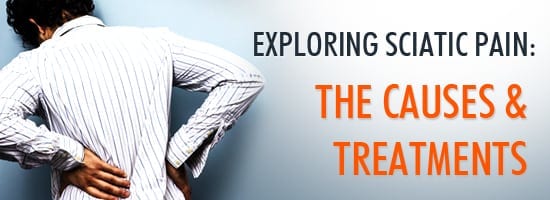
Characterized by a pinched sciatic nerve, sciatica can send pain that radiates throughout the lower back, hips, and legs. The result is often debilitating pain in those that are suffering with it. Fortunately, a variety of treatments and therapies can reduce pain and correct the issue, and even prevent it from occurring again.
What are the symptoms of sciatica?
The pain symptoms resulting from sciatica can vary greatly from one person to the next. It can feel like a dull ache, a burning pain, or simply a tingling sensation. The pain can reach severe levels that will cause a patient to be unable to move or walk correctly. Sciatica pain is generally felt on one side only and can radiate from the lower back to the bottom of the foot, which are all connected to the sciatic nerve. The leg that the sciatic nerve is being affected in will often feel weak. These symptoms are more likely to appear or to increase in intensity after sitting or standing, when lying down, or when putting any more pressure on the nerve (like when sneezing, bending over, or coughing).
What causes sciatica?
Sciatica can be caused by many things including a slipped disk, spinal stenosis, injury, pregnancy, and tumors. All of these factors can cause the muscle to push on the sciatic nerve, causing it to become wedged between the muscles and creating an uncomfortable sensation for people that are suffering from it. Sciatica is seen more often in women and in individuals that stand or sit in one position for a very long period of time. It does not happen on its own and is always a result of another primary condition. Sciatica is also seen more frequently in overweight individuals than it is in individuals of a healthy weight.
How is sciatica treated?
Since sciatica is a secondary condition, the condition causing the sciatic nerve to be pinched must be treated directly. For example, tumors that are pushing on the nerve must be removed and women that are pregnant must undergo physical therapy to help stretch the muscle out and keep it from pushing on the nerve. Individuals who are overweight or stay in one position throughout the day must become more active to help keep sciatica occurring.
While treatment is being addressed for the primary conditions, the symptoms for sciatica can generally be alleviated with ice, heat, and gentle massage to the area that contains the sciatic nerve.

